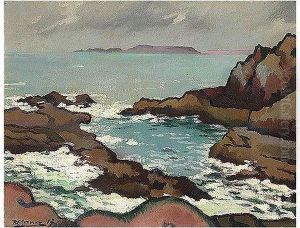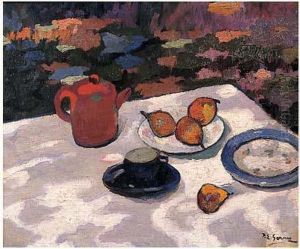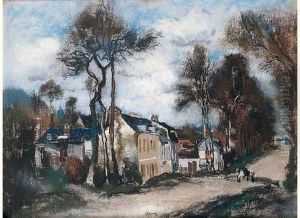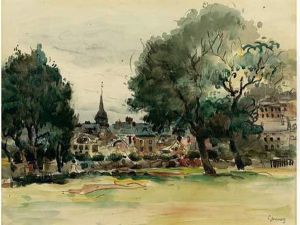Paul E. Gernez Paintings
Paul Emile Gernez was a French painter, recognized for his marine landscapes, still lifes, and scenes of daily life. Born on January 26, 1888, in Saint-Quentin, in northern France, Gernez developed an interest in art at a very young age. His talent was evident, and he pursued his passion for painting despite the modest circumstances of his family.
In pursuit of artistic training, Gernez moved to Paris, where he studied at the École des Beaux-Arts. His education was traditional, emphasizing classical techniques and the study of the Old Masters. Gernez was particularly influenced by the works of the Impressionists, whose vibrant use of color and light resonated with his own sensibilities. Although not as widely known as some of his contemporaries, he was a part of the rich tapestry of early 20th-century French art, contributing to the post-impressionist movement with his unique style.
Throughout his career, Gernez exhibited his works at various salons and galleries, including the Salon des Artistes Français, where he was a regular participant. His paintings often depicted the French countryside, coastal scenes of Normandy and Brittany, and the bustling life of Parisian streets. His approach to painting was characterized by a gentle touch, a harmonious palette, and an ability to capture the mood of the environments he painted.
Gernez's work was well-received by both critics and the public. His paintings were noted for their poetic atmosphere and the artist's skill in rendering the effects of light on different surfaces. Despite the changing artistic trends of the early 20th century, Gernez remained committed to his style, and his body of work reflects a consistent dedication to his artistic vision.
Paul E. Gernez passed away on July 17, 1948. Although he never achieved the level of fame of some of his peers, his work continues to be appreciated by art lovers and collectors. Today, his paintings can be found in private collections and occasionally appear in auctions, where they are valued for their contribution to the post-impressionist movement and their portrayal of early 20th-century French life.



